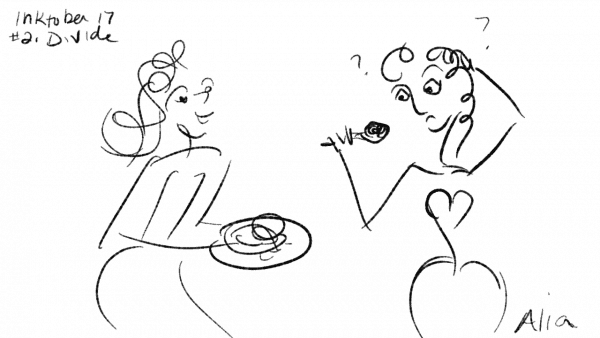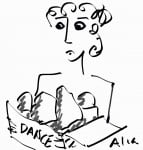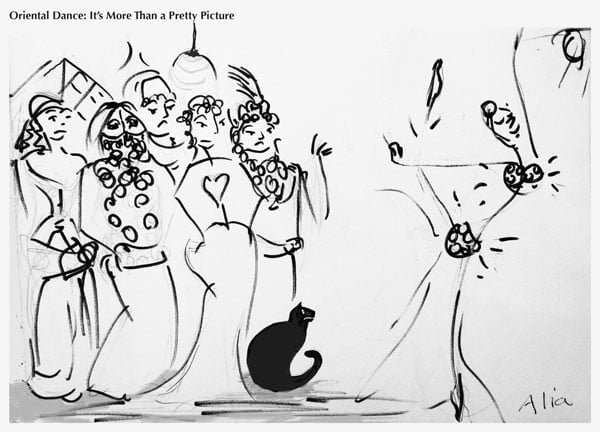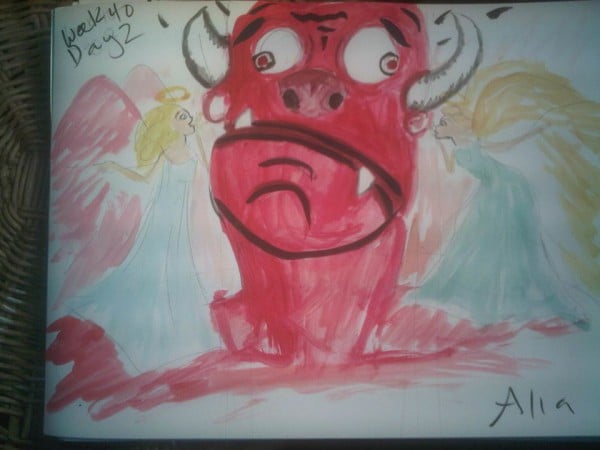Is belly dance like coffee? What does Dina think?
Back when I was a kid, you wanted coffee, that’s what you got. There wasn’t much choice. The only decaf was Sanka, and instant coffee was pretty much undrinkable. Now you go into a nice café, or even a small grocery store, and the assortment is dizzying. Coffee from Sumatra, Brazil, Columbia, East Timor, Bali, even Hawaii. There’s Fair Trade, Shade-Grown, Organic, light, dark, and medium roast—a stunning level of diversity.
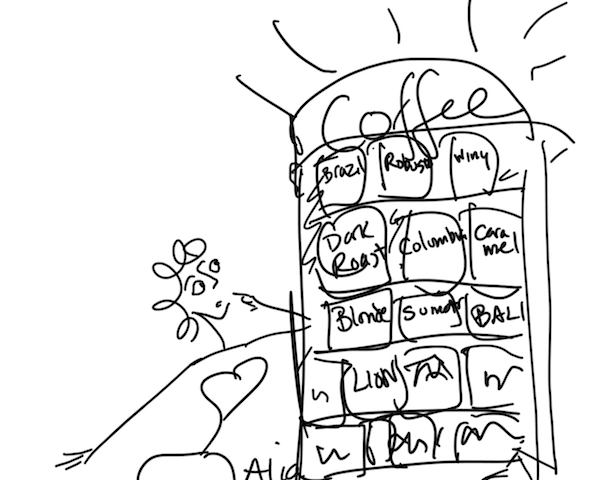
Just like belly dance, right? Egyptian, American, Russian, Tribal, Fusion and on and on.
Right?
Well…
Dina said NO.
This was at the Belly Dance Blossom Festival in May 2018. Dina Talaat (yes, the Dina) was a panel of one, taking questions from the audience.
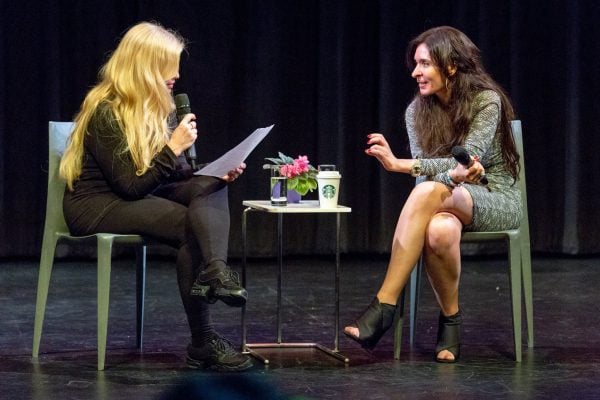
We asked about the state of belly dance. “Is bad,” she said. “Every country takes belly dance for her own. Spanish belly dance, Russian belly dance. Is bad.”
“Is there Russian samba?” she asked. “No. Samba is samba. Why isn’t belly dance belly dance?”
“Samba is samba. Why isn’t belly dance belly dance?”
I had never really thought about this in such a way, but it makes sense. I’ve spent my time internalizing the big picture elements of belly dance—celebrating the feeling in the moment, incorporating the infinite variation of micromovement, and bringing joy. Everything else is window dressing– regional accent or personal style.
In addition, Dina’s point reminded of what Mo Geddawi had said at the same festival the previous year, when asked about a suitable name for belly dance. Egyptian dance, he said promptly. It comes from Egypt. Historically, when other Arab-speaking countries dance this dance, he explained, they call it raqs Masri—Masri being Arabic for Egyptian.
Dina (and Dr. Mo) want Egypt to get credit for this monumental addition to world culture. Even if Egypt herself is not willing to take the credit, even if, as she maintains, that raqs sharqi will never be the national dance of Egypt (Dina dismissed that hope with one word—Dream). Still, it’s from Egypt and that’s that. I can relate to that. So then we asked her,
What is the number one foreign dancers mistake?
Dina said it’s that they don’t follow belly dancing. It’s not a style to mix, for example, Russian style. She said “Dancers go to Dubai and see hair dance, or erotic steps and mix that with belly dance. They call it belly dance. It’s not. Golden age dancers never used their hair like this. I’m different–but I do the same steps [as the golden age dancers]. To be different, you have to BE different, be you,” but the steps are the same. The dance is the dance.
“To learn belly dance for real is difficult,” she said, “but you have to do it, because you love this art and you have to do it real… Easy to dance and get money. To love this art, is not about money. It’s about the future of your art, where it’s going.”
What should beginners do?
Beginners should “learn technique first—torso (the hips and upper body), then take hands. Hands important, showing the step or moving the step. Don’t touch choreography before two years.”
Dina’s ideas about teaching and learning really resonated for me. How many beginner classes start out with choreography? Most of them, right?
Mine don’t. When I teach beginners, we learn technique and improv and transitions. My Community College students can dance in 15 weeks. Yes, this dance takes your whole life, but they dance with more grace and confidence than lots of folks I see who’ve been dancing for years.
What is our responsibility as pro dancers?
“The new generation,” she said, “to teach them the truth of belly dance. This is Egyptian, this is the rules, 1 2 3 4, Oriental belly dance–and this–this is other thing. If you mix, it’s fusion. Call it fusion.”
And what do we call all our merging of belly dance with ballet, hip hop, kathak, and god knows what? What do we call that?
“Fusion,” she said. “Is a good word. Fusion.”
Okay. But where does this leave Turkish belly dance?
Also Greek, Lebanese, and any other Near Eastern regional style?
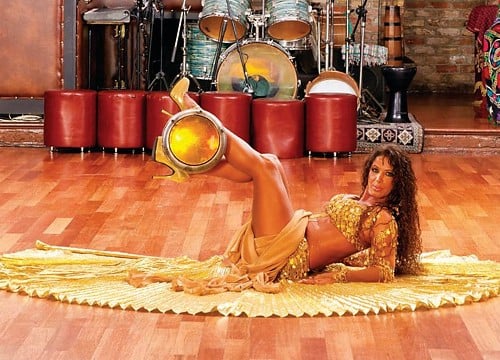
When Dr. Mo suggested Egyptian dance as a name, Yasmina Ramzy said, no, we can’t have that because we have Turkish etc.
Turkish stye is a fusion. But I believe it is also authentic. Here are three reasons off the top of my head.
- Turkish music is somewhat different–clarinet, influences, etc–so some of the dance differences are from representing the music, plus it’s regional accent, see below.
- The dancers there have a regional “accent” related to the local folklore and culture. I think that’s authentic, as everyone has that, no matter where they dance.
- The inclusion of Romani steps (and music). Here is where it’s mixing and now it’s fusion. And it is–though it is a venerable established thing. To me, it’s still belly dance.
Why? Leila Farid once told me that in Cairo, audiences expect a dancer to mix in some of the folklore from her native village. This is what the Romani dancers have done. So that’s authentic.
How is it different from us dancing the cancan to Peter Gunn in bellydance costumes? To me, that’s too many things that don’t go together. That’s clearly fusion (not to mention some hints of appropriation, depending on who what when where why).
Now, Dina or Dr. Mo might not agree with me.
They may well think that Turkish style is an abomination. The Ottomans did, after all, control Egypt for almost 300 years, and they are roundly disliked for it (which is why you don’t see much 9/8 in Egyptian music). And Egypt and Turkey have blamed each other for belly dance, neither willing to accept the blame (or credit) for being the originator of the dance.
But the Romani people are not Turkish. They are a separate ethnic group, an oppressed people who take on the styles of their oppressors to make a living from them. So they get special dispensation.
What’s the answer? Yes, you can certainly say it’s fusion, however it’s
A. Very old, and
B. the unique creation of an entire ethnic group. So I think we can still say Turkish style, just like we always have ; ).
And there you are.
Dina’s points make sense to me, especially having explored the differences between Eastern and Western values though writing Midnight at the Crossroads. Belly dance is a uniquely magical, healing, creative, expressive dance form–it deserves to be valued for itself.
Wikipedia says, “The native (undomesticated) origin of coffee is thought to have been Ethiopia, with several mythical accounts but no solid evidence. The earliest substantiated evidence of either coffee drinking or knowledge of the coffee tree is from the early 15th century, in the Sufi monasteries of Yemen,[1] spreading soon to Mecca and Cairo.”
So coffee is another thing, like belly dance, that comes to us from Africa. Clearly, there are some similarities. But everyone seems to be happy to let coffee become nativised in country after country. The thing with coffee, though, is that it’s still coffee, no matter where it’s grown. The species doesn’t change. It has regional differences due to terroir, but it’s the same plant. It’s the same stuff.
Belly dance hasn’t always fared so well. When we see our dance through Western eyes instead of an Eastern perspective, we start to lose its most important attributes–feeling, improvisation, and joy. And then belly dance becomes something very different–stylized, externally focused, competitive, and performative. Yet, in its home environment it is internal, joyous, social, healing, and free. So in this way, it is unlike coffee.
Both coffee and belly dance are are delicious and addictive. But if I drink too much coffee, I get a headache and my armpits stink. Too much Western culture does this, too. Belly dance never does that to me. So there’s that ; )
Over the years, I’ve developed classes that teach technique, improvisation, musicality, and composition from a clear Eastern perspective. Some of them are coming up (details are below), but whatever classes you take, or styles you dance, these are things to think about.
So let me know what you think ; )
Love,
Alia
PS I’m on Instagram!
@BellyDanceSoul, or instagram.com/BellyDanceSoul Come say hi!
And I’m enjoying the Bellydance Bundle’s #21DaysOfBellyDance Instagram Challenge. I did Day 1 so far. Check it out: https://www.instagram.com/p/Bnpc6WZgWNV/
My ridiculously cute Un-Drill video airs today on Instagram! It’s part of the Bellydance Bundle’s #21DaysofBellyDance. See it at https://www.instagram.com/p/BnrC4VqnexX/
Follow along—and get your free 21-Day Practice Guide right here: https://aliathabit.com/Bundle-21Day-Guide
Fall Calender
Sept 23-Nov 3
Effortless Improv, a Six-week Online Improvisation Crash Course
Want to improvise with joy and ease? You can! Effortless is a forum-based course with daily exercises and accountability. More at aliathabit.com/effortless
Oct 1
The Belly Dance Bundle Returns!
Over $1000 worth of belly dance madness. 27 contributors. Over 80% off! I’m making a class on Musicality. See more at https://aliathabit.com/bundle
Nov 4-Dec 8
Glorious: A Five-Week Course about the Five-Part Routine
Each week we will: Highlight one part of the routine. Dance through an entire routine (different every time). Each class will be recorded. Each recording will be available for one week. There will also be a Q&A video/phone conference each week. Students will learn structure, moods, and technique, as well as practice improvising through the routine. This is so fresh it doesn’t even have a sales page. Trust the Chef Premium Earlybird Pricing (until Oct 8): $69 (full price $99). Link goes straight to Paypal. Please copy and paste if the link is not clickable.
https://www.paypal.com/cgi-bin/webscr?cmd=_s-xclick&hosted_button_id=WGXCTY2AW22LW
Special Super Early Deal: Buy both Effortless and Glorious for $219 (full price $249). Only until Sept 18. Link goes straight to Paypal. Please copy and paste if the link is not clickable.
https://www.paypal.com/cgi-bin/webscr?cmd=_s-xclick&hosted_button_id=J6TXSY3DF6WXN
